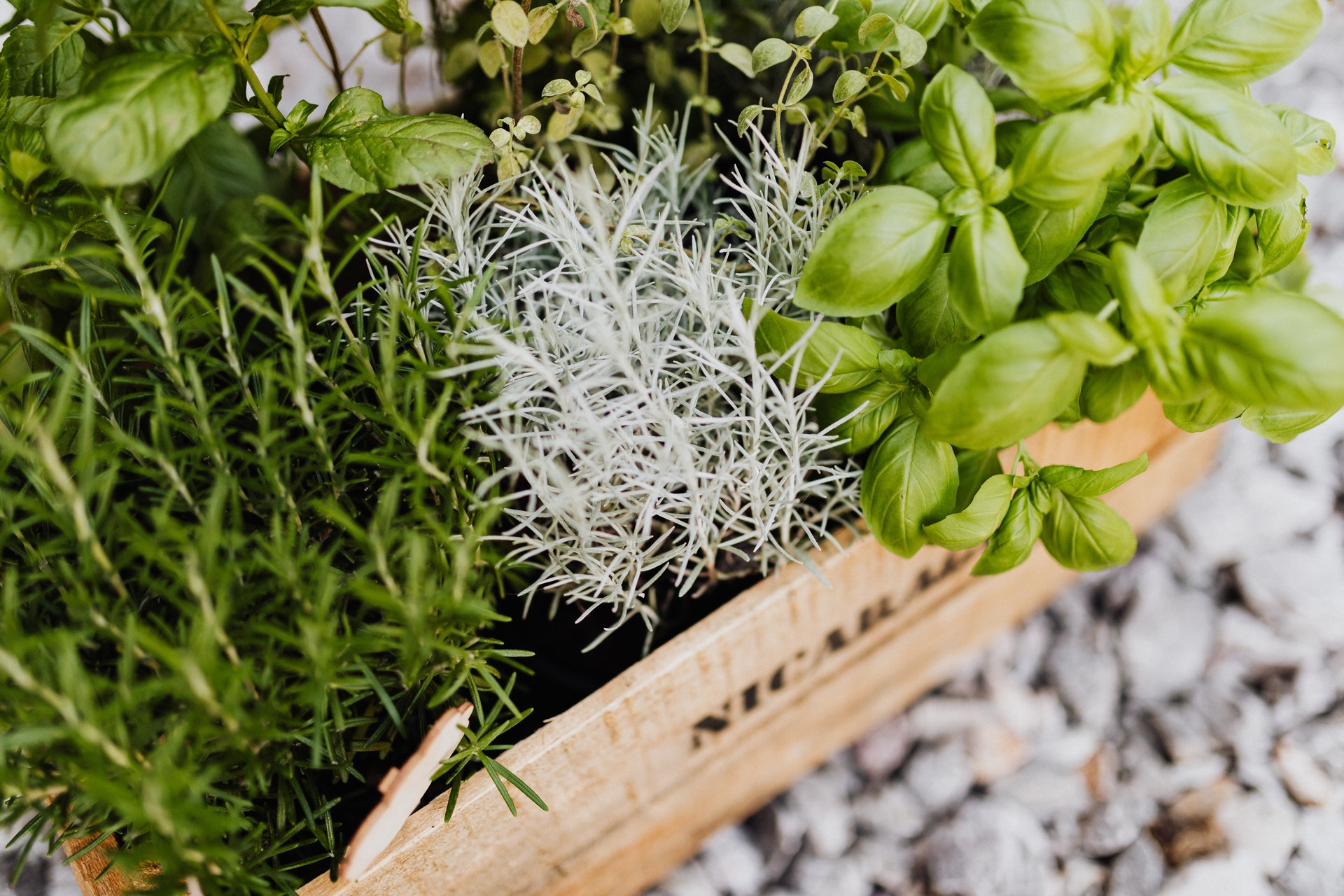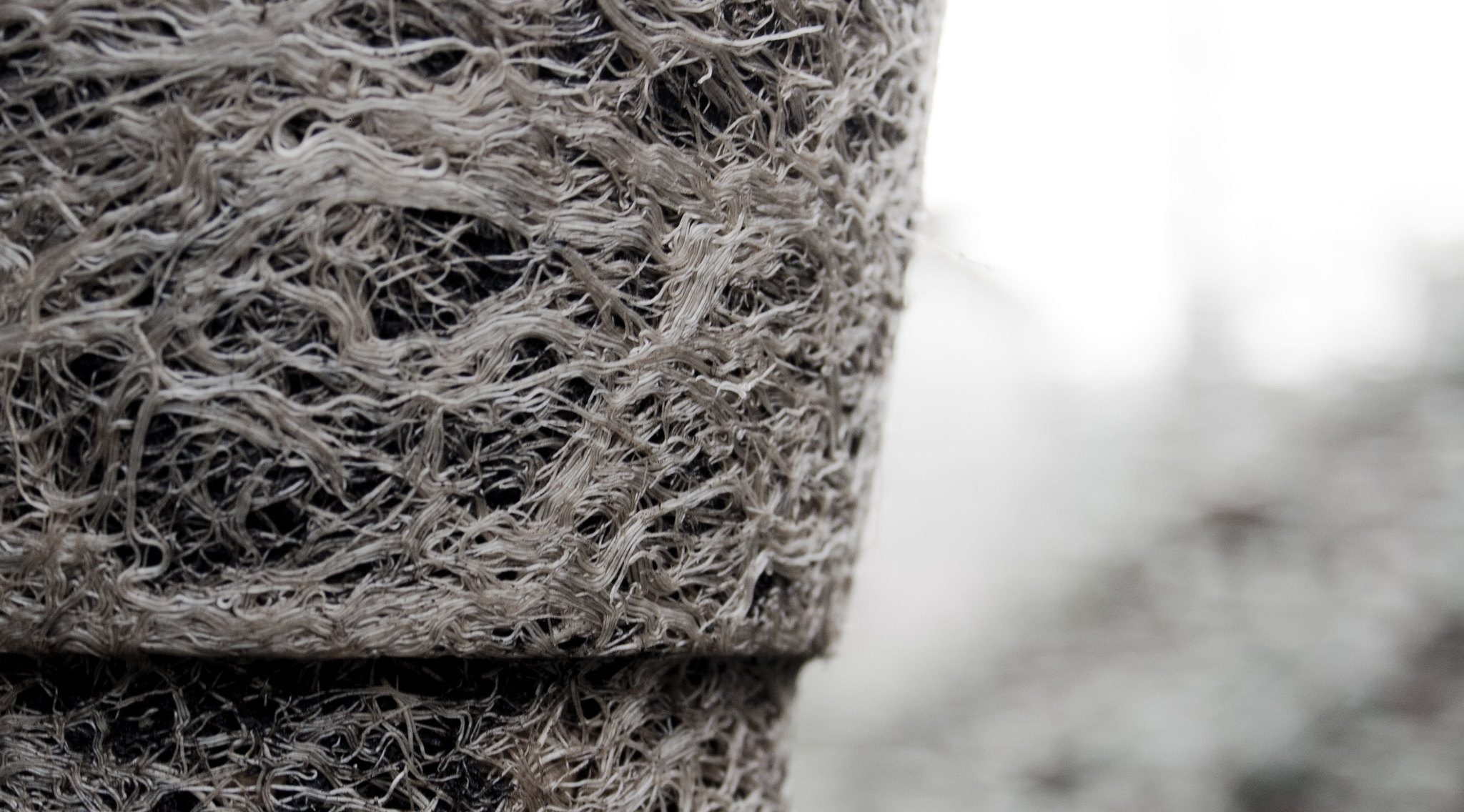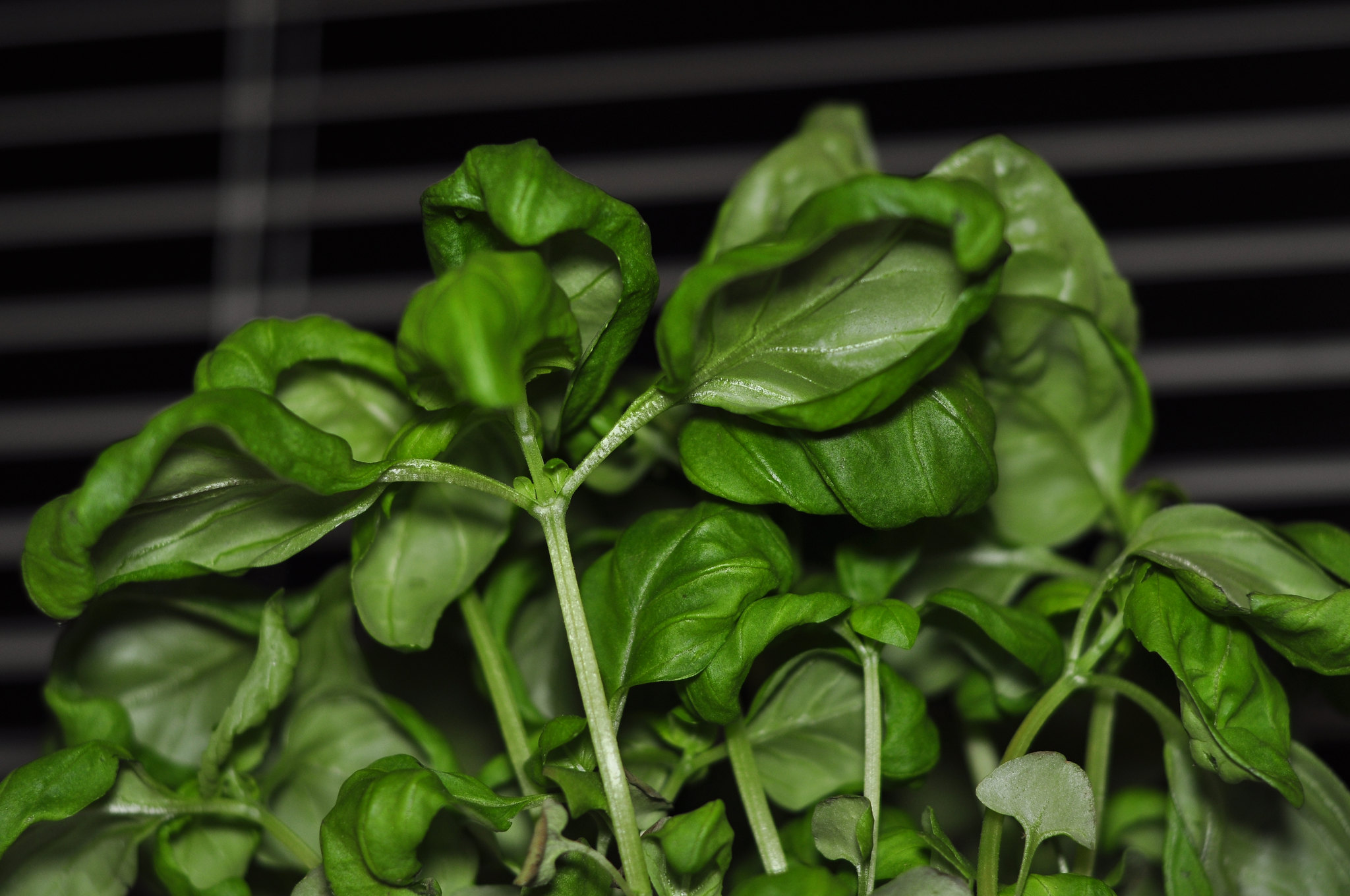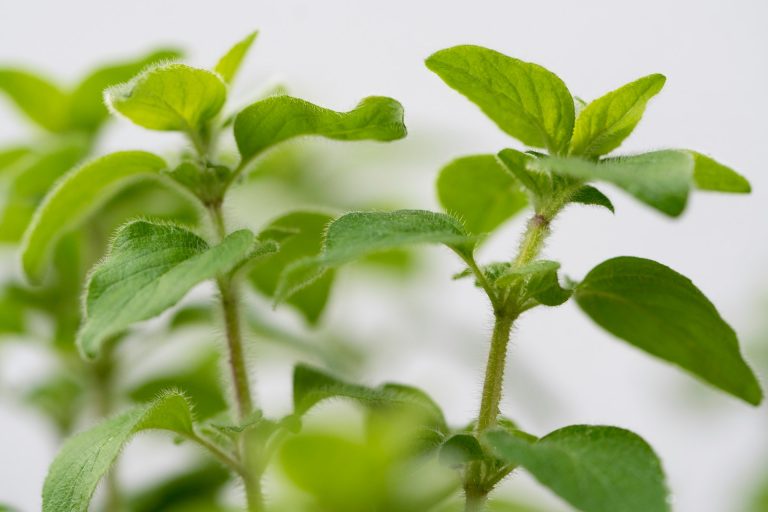Given a little good soil and a lot of bright sun, most herbs are fairly easy to grow. Herbs don’t need a lot of space, and can even be grown on a balcony high above the earth. A few simple considerations should be addressed for growing potted herbs, including pot selection and planting space.
After you get started, proper harvesting can give you a greater yield, ensuring a year-round supply of some of your favorite flavors, as many aromatic herbs are ideal for preserving.
Growing herbs in containers
If you haven’t got an assortment of herbs growing already, it’s not too late. You do not need to prepare a garden bed to grow herbs. Although there are plenty of perennial herbs that do well in the ground, most common herbs are also fine in pots. Sunlight is the essential element with these plants.

If you haven’t already started seedlings, you can purchase young plants from a garden center. It is likely that they will need to be bumped up to a larger pot right away. Find some fertile, well-drained potting soil without chemical fertilizers or additives, or better yet, make your own potting mix with natural compost.
Pick your pot
Choose pots that will give each herb at least 6” in diameter of growing space. Combining multiple plants in one large container is great if you have the room—plans like company! Pots must have drainage holes, and a shallow dish to set them in is an added bonus. Choose your pot material to suit your various concerns.
Success
You are now signed up for our newsletter
Success
Check your email to complete sign up
Terracotta pots have a lovely natural look outdoors; just keep in mind the fact that their porous nature means that they dry out more quickly than plastics and ceramic. Ceramic pots can be gorgeous, but they tend to be very heavy, especially when you get to the larger sizes, and on top of that, fill them with moist soil. Consider whether, and how often you will be moving these pots.
Plastic pots are inexpensive, maintain moisture, and weigh next-to nothing. If you don’t like the plastic look, you can always place it inside something more aesthetic for the best of both worlds. Be sure not to place it in a pot without drainage, however, as collected rainwater can easily cause your plant to drown.
Herbs like thyme, rosemary, sage, oregano and lavender are perennial, and will need a larger pot each year if they survive the winter. Depending on where you live, you may need to provide some protection from the cold, but none of the above are fond of the typical indoor environment. If you have an unheated porch or a well-lit garage, they would be happier there for the winter.

Herbs like basil, parsley, cilantro and dill are annual plants, but they can produce an abundance in their short lifetimes. They have root systems that prefer deep pots, and are less tolerant of drought than their cousins above.
Mint is an aggressive herb that, if you don’t want it to take over your garden, is best grown in pots. There are too many (nearly 600) varieties to expound upon, each with their own flavor and characteristic. It’s always nice to have a variety of mints on hand, to flavoring tea, garnish a meal, and Repel Mosquitoes!
Keep your herbs in a sunny area and water them when the soil surface becomes dry. Other than that there is little to worry about other than harvest, as most herbs are resistant to pests.
Harvesting herbs
You may not realize it, but cutting back your herbs encourages new growth and also inhibits “bolting,” or premature flowering. With this method, you can get multiple harvests each season from the same plant. Although the same basic principles are broadly applicable, the plant’s growth habit ultimately determines the best way to harvest its leaves.
Know your nodes
On any plant stem, the area where new shoots, leaves, and buds originate is called a node. Most plants have many nodes, with a lengthy space between, called an internode. Some plants have leaves so closely spaced that there is hardly any internode. This is important in determining how to harvest your herbs.

Basil
As an example, basil will send out two leaves every inch or two for the length of their stem. At the base of those leaves, i.e. the node, new shoots will emerge readily if the stem is cut just above that area. After your plants have grown 8-10 inches tall, cut the main shoot just above the first or second node. In another 10 days or so, new shoots may be long enough to harvest in the same way.
It is ideal to harvest basil frequently to encourage the plant to send out new shoots, and also to discourage flowering. Once the plant starts flowering, its energy is focused on reproduction and the leaves are not as tender, or tasty. If you’re harvesting more basil than you can consume, remember that fresh pesto freezes really well. Freeze it in small glass or plastic jars and enjoy the taste of summer long after it’s gone.
Various mints, large-leaf oregano, sage, and tarragon can all be harvested in a similar fashion.

Thyme
Thyme stems are covered in tiny leaves, making harvesting quite easy. Cut 3-4 inch sprigs once the stems grow to a length of seven inches or more, especially if you notice the start of flowering. Giving your thyme a good haircut will give you a stronger and fuller plant, which should last for many years. As long as you give it enough space, a single plant can grow to be 18 inches in diameter, and give you an abundance of thyme.
Thyme is an exceptional herb for drying, which can be done easily in your hot car during the summer. Simply wash your sprigs to remove any bugs or bird droppings, and lay the sprigs in a loose row inside a folded tea-towel. Set them in the hatch, or even on the dash, where they will get plenty of heat, and in a week or so you will have perfectly dried herbs.
Harvest and dry other aromatic herbs like oregano, marjoram, lavender and rosemary in the same way, except harvest your lavender at the peak of flowering.
Parsley
Some herbs don’t exhibit nodes until they are about to enter the flowering stage. Parsley, cilantro, and dill are good examples. Much like lettuce, they grow in “rosettes” from the base. Elongation of the stem indicates that they are preparing to flower.
Parsley is biennial, meaning it will not flower until the second year, so harvesting parsley is very straightforward, although it is slow to get started. Once you have several full size leaves on each plant, you can begin harvesting. Simply cut the outer leaves near the base, and new leaves will continue to grow from the center.
“The greatest fine art of the future will be the making of a comfortable living from a small piece of land.”
Abraham Lincoln
Cilantro and dill, on the other hand, are annuals, and they are bound and determined to set seed each year. To get a continuous crop of these herbs it is necessary to do multiple sowings. Every few weeks, start a new set of seedlings. Once the plants have several mature leaves, you can begin to harvest the older ones.
If you over-sowed your dill or cilantro, you can take full plants as your harvest, selectively thinning to give the proper spacing for the remaining plants. This will prevent the quick bolting that always results from overcrowding.
Although flowering is not ideal for your harvest, allowing a few plants to eventually flower and set seed not only attracts many beneficial insects, but also supplies you with fresh seed for the next season. Herbs like dill, cilantro, and lemon balm will happily self-sow in a garden setting, giving you a virtually-perennial crop. Seeds from mature basil, lavender and marjoram can be collected for starting indoors in the spring.















